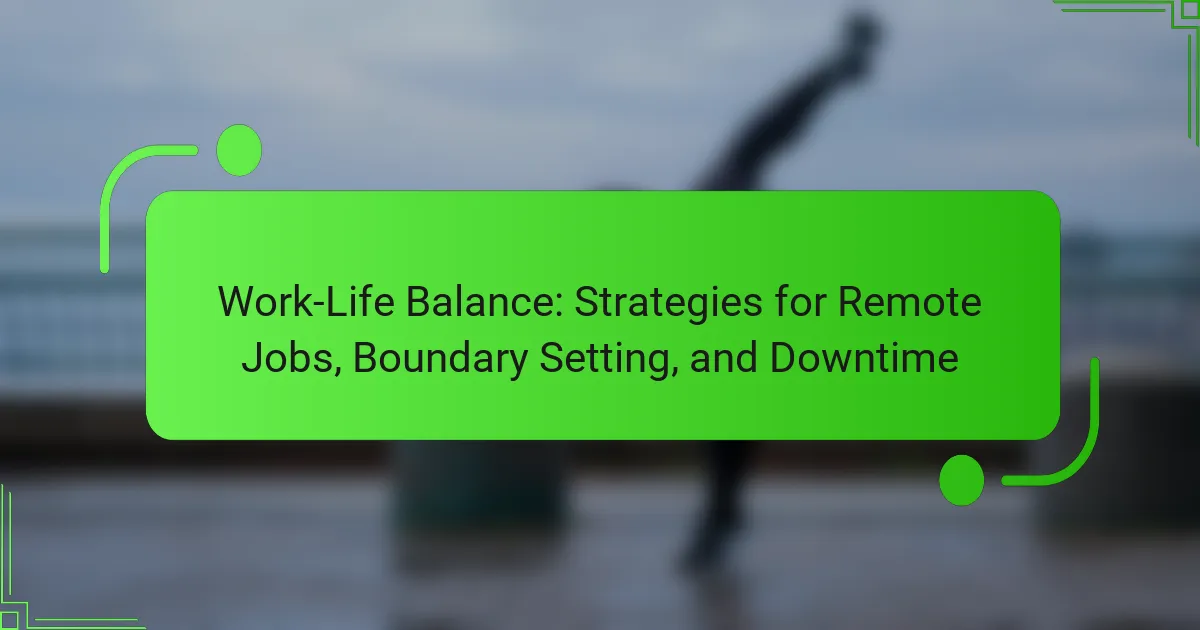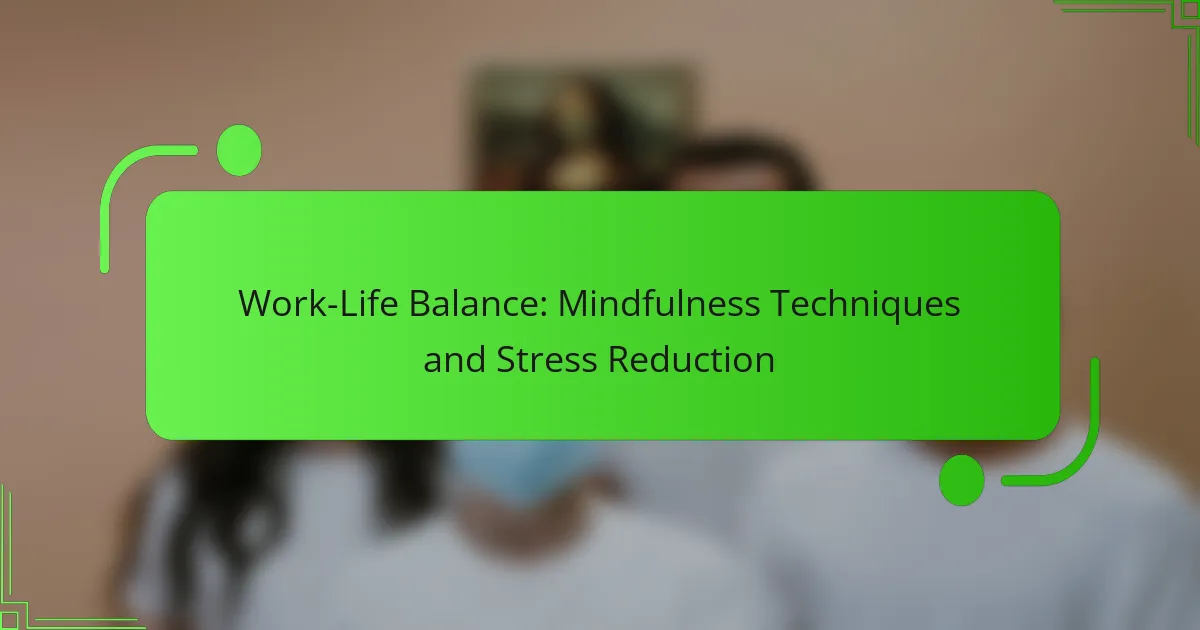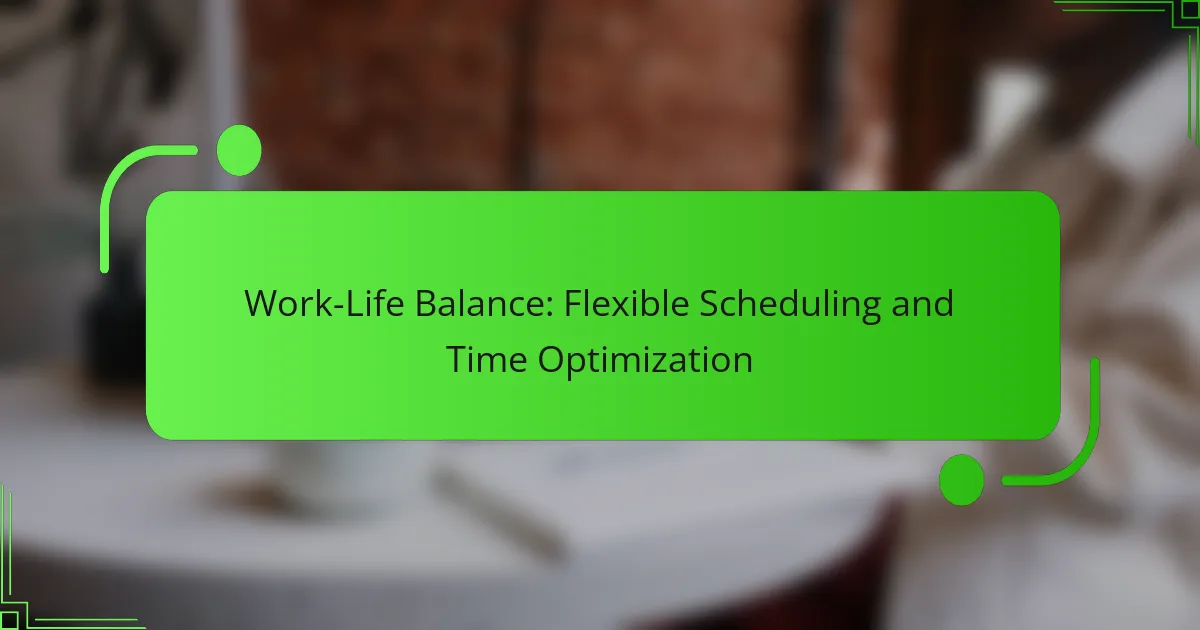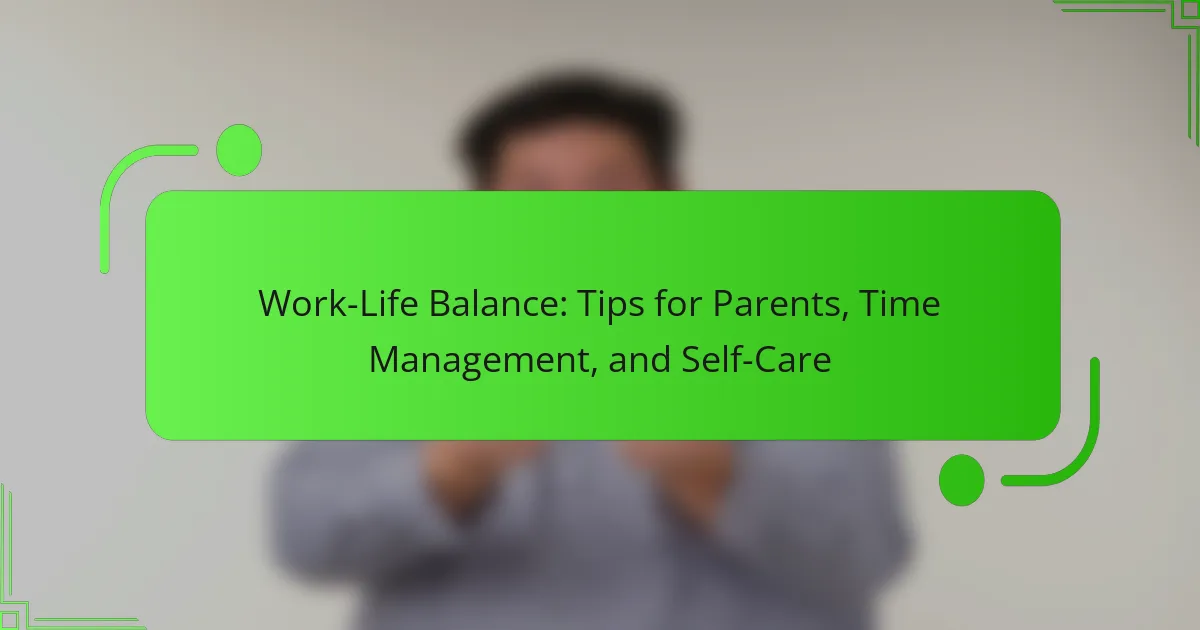Achieving work-life balance in remote jobs requires intentional strategies to separate professional responsibilities from personal life. By setting clear boundaries, creating an effective workspace, and prioritizing regular downtime, remote workers can enhance their productivity while safeguarding their well-being. Implementing these practices not only helps in maintaining focus but also prevents burnout, ensuring a healthier work environment.
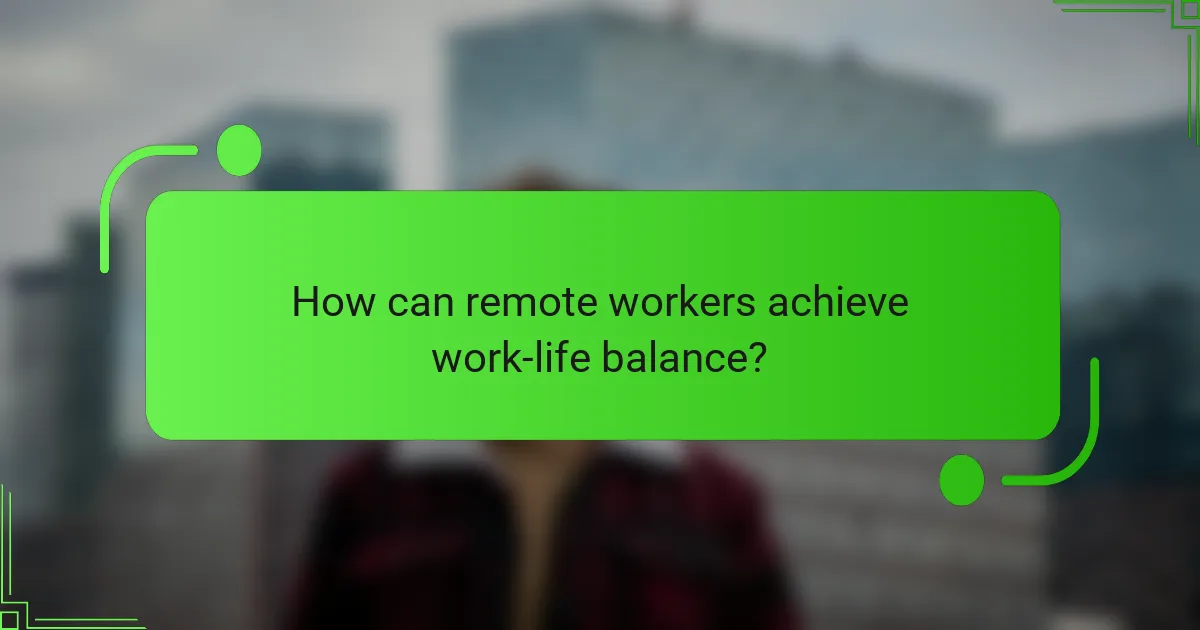
How can remote workers achieve work-life balance?
Remote workers can achieve work-life balance by implementing strategies that clearly separate their professional and personal lives. This involves setting boundaries, creating a conducive work environment, and incorporating regular downtime into their routines.
Flexible scheduling
Flexible scheduling allows remote workers to tailor their work hours to fit personal commitments and peak productivity times. This can mean starting earlier or later in the day, depending on individual preferences and responsibilities.
To make the most of flexible scheduling, consider using a time-blocking technique to allocate specific periods for work tasks and personal activities. This helps maintain focus while ensuring that personal needs are met throughout the day.
Dedicated workspace
Establishing a dedicated workspace is crucial for maintaining work-life balance in a remote setting. A specific area for work helps create a mental separation between professional and personal activities, reducing distractions.
When setting up your workspace, choose a location that is quiet and free from interruptions. Ensure it is equipped with the necessary tools, such as a comfortable chair and reliable internet, to enhance productivity.
Regular breaks
Incorporating regular breaks into the workday is essential for sustaining energy and focus. Short breaks every hour can help prevent burnout and improve overall productivity.
Consider using techniques like the Pomodoro Technique, which involves working for 25 minutes followed by a 5-minute break. This structured approach can enhance concentration and provide necessary downtime throughout the day.
Time management tools
Utilizing time management tools can significantly improve efficiency for remote workers. Tools like calendars, task managers, and project management software help organize tasks and deadlines effectively.
Popular options include Trello, Asana, or even simple to-do lists. These tools can help prioritize tasks and ensure that work is completed on time, allowing for a more balanced approach to work and personal life.
Mindfulness practices
Mindfulness practices can enhance work-life balance by promoting mental well-being and reducing stress. Techniques such as meditation, deep breathing, or even short walks can help clear the mind and improve focus.
Incorporating just a few minutes of mindfulness into your daily routine can lead to greater clarity and a more balanced perspective on work and personal responsibilities. Apps like Headspace or Calm can provide guided sessions to get started.
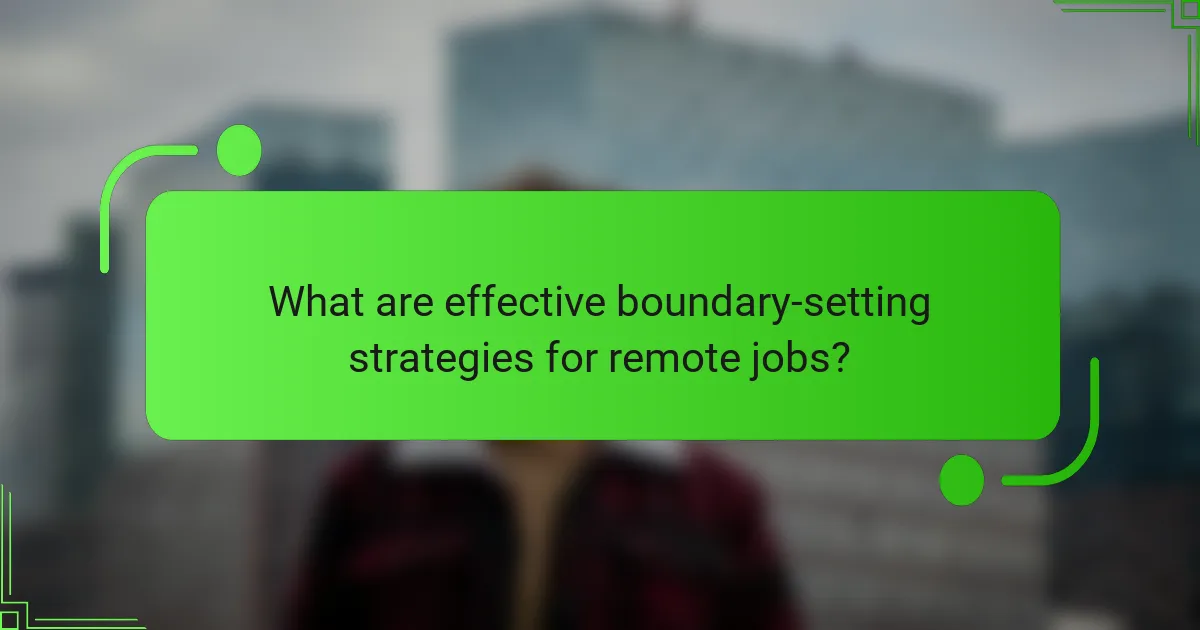
What are effective boundary-setting strategies for remote jobs?
Effective boundary-setting strategies for remote jobs involve clearly defining work hours, communicating availability, using technology to minimize distractions, and establishing a shutdown routine. These practices help maintain a healthy work-life balance and prevent burnout.
Establishing work hours
Setting specific work hours is crucial for remote employees to delineate professional time from personal time. Aim for consistent hours that align with your team’s schedule or your personal productivity peaks, typically ranging from 9 AM to 5 PM or similar. This consistency helps others know when to reach you and allows you to plan personal activities outside of work.
Consider using a calendar tool to block off your work hours and share it with your team. This transparency can reduce interruptions and foster respect for your time.
Communicating availability
Clear communication about your availability is essential for effective collaboration in remote work. Utilize status indicators on messaging platforms to signal when you are available, busy, or offline. Regularly update your team on any changes to your schedule, especially if you plan to take time off or adjust your hours.
Additionally, consider setting up a shared document or calendar where team members can see each other’s availability. This practice encourages mutual respect for each other’s time and helps coordinate meetings more effectively.
Using technology to limit distractions
Leverage technology to create a focused work environment by using apps that block distracting websites and notifications during work hours. Tools like Focus@Will or Freedom can help maintain concentration by limiting access to non-work-related content. Establishing a dedicated workspace can also signal to your brain that it’s time to work.
Consider using project management tools like Trello or Asana to keep tasks organized and reduce the mental load of remembering what needs to be done. This can help you stay on track and minimize distractions from wandering thoughts about unfinished tasks.
Creating a shutdown routine
A shutdown routine signals the end of the workday and helps transition from work mode to personal time. This can include simple steps like reviewing your completed tasks, setting priorities for the next day, and physically shutting down your computer. Aim to spend 10-15 minutes on this routine to mentally detach from work.
Incorporate a personal ritual, such as a short walk or a cup of tea, to reinforce the boundary between work and home life. This practice not only helps you unwind but also prepares you for a more productive next day.
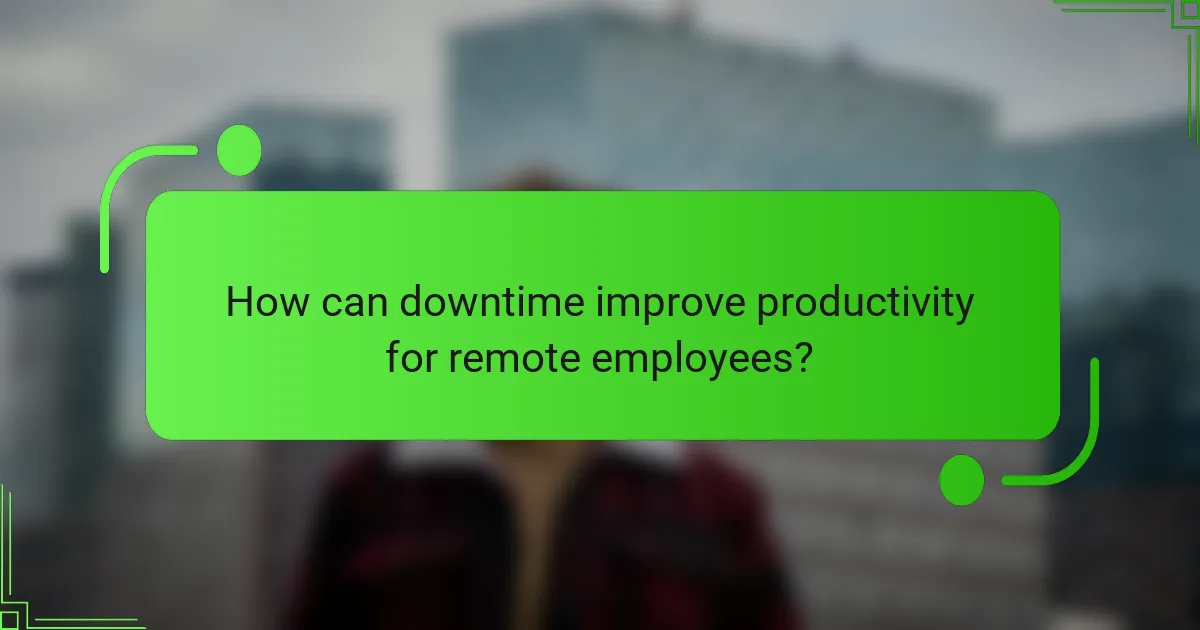
How can downtime improve productivity for remote employees?
Downtime is essential for remote employees as it enhances productivity by allowing time for mental recovery and creativity. Taking regular breaks can prevent burnout and improve focus, leading to more efficient work sessions.
Importance of breaks
Regular breaks are crucial for maintaining high levels of productivity. They help to refresh the mind and reduce fatigue, allowing employees to return to their tasks with renewed energy. Aim for short breaks every hour and longer breaks every few hours to maximize effectiveness.
Consider using techniques like the Pomodoro Technique, which involves working for 25 minutes followed by a 5-minute break. This structured approach can enhance concentration and make work feel more manageable.
Benefits of hobbies
Engaging in hobbies during downtime can significantly boost creativity and problem-solving skills. Hobbies provide a mental escape from work-related stress, allowing individuals to recharge and return to their tasks with fresh perspectives.
Whether it’s painting, gardening, or playing a musical instrument, dedicating time to personal interests can lead to increased job satisfaction and overall well-being. Aim to spend at least a few hours a week on hobbies to reap these benefits.
Social connections
Maintaining social connections is vital for remote employees, as isolation can hinder productivity and morale. Regular interactions with colleagues or friends can provide emotional support and foster a sense of belonging, which is essential for mental health.
Consider scheduling virtual coffee breaks or participating in online group activities to strengthen these connections. Even brief conversations can enhance collaboration and create a more positive work environment.
Physical activity
Incorporating physical activity into your routine can greatly improve productivity for remote workers. Exercise boosts energy levels, enhances mood, and improves focus, making it easier to tackle work tasks effectively.
Try to include at least 30 minutes of physical activity most days of the week. This could be a brisk walk, a home workout, or even stretching during breaks. Prioritizing movement can lead to better health outcomes and increased work efficiency.
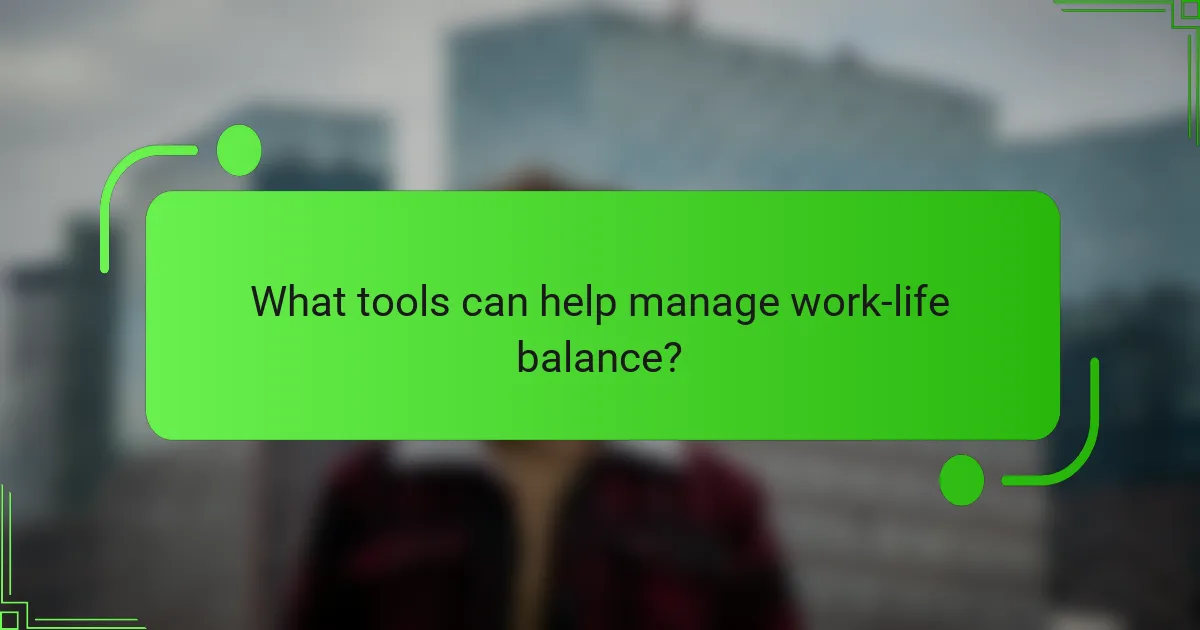
What tools can help manage work-life balance?
Several tools can significantly enhance work-life balance by streamlining tasks, improving communication, and fostering concentration. Utilizing the right applications can help remote workers set boundaries and allocate time effectively.
Trello for task management
Trello is a visual project management tool that allows users to organize tasks on boards. It enables remote workers to break down projects into manageable pieces, assign deadlines, and track progress visually. This can help maintain clarity on what needs to be accomplished each day.
To maximize Trello’s effectiveness, create boards for different projects and use lists to categorize tasks by priority or status. Regularly updating these boards can help prevent overwhelm and keep work organized.
Slack for communication
Slack is a messaging platform designed for team collaboration, making it easier to communicate with colleagues in real-time. It allows for organized conversations through channels, direct messages, and file sharing, which can enhance productivity and reduce email clutter.
To maintain work-life balance, set specific times to check Slack messages and mute notifications outside of work hours. This helps prevent work-related distractions during personal time, ensuring a clearer separation between work and home life.
Focus@Will for concentration
Focus@Will is a music service that provides background tracks designed to enhance concentration and productivity. By using scientifically optimized music, it can help remote workers maintain focus during tasks, reducing distractions from their environment.
Consider using Focus@Will during dedicated work sessions, especially for tasks requiring deep concentration. Experiment with different genres to find what works best for you, and set a timer for focused work intervals to maximize effectiveness.
